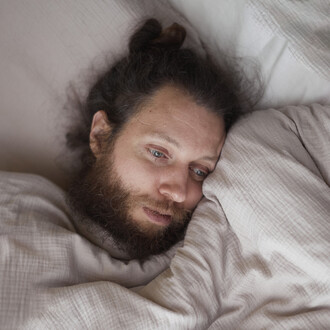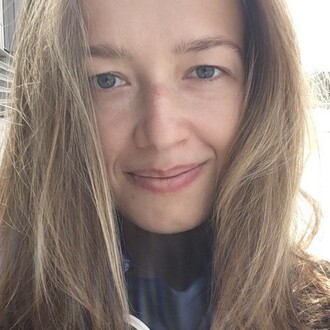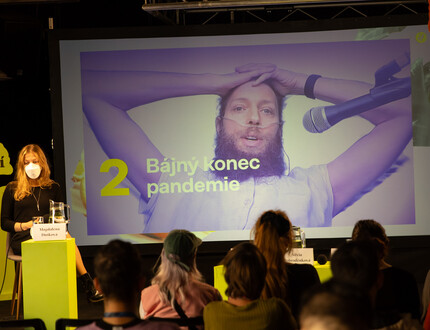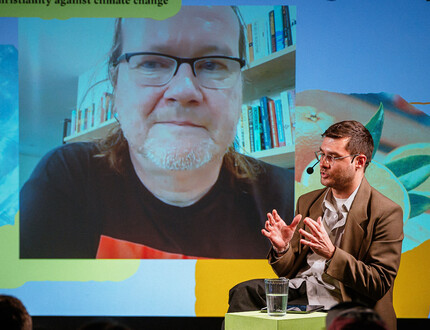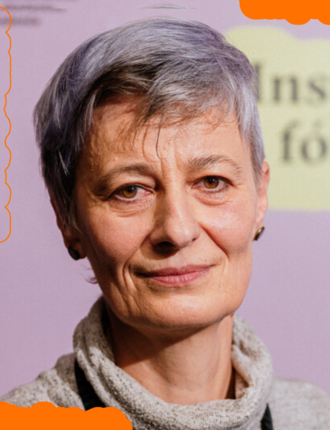When did people start talking about Long COVID syndrome?
H: I read something in the foreign press about the first patients with LC at the beginning of the pandemic in spring 2020. Larger Czech media only began to address the topic of LC in more detail at the beginning of 2024. I believe that for people in the Czech Republic who suffer from this disease and have not received proper support for perhaps the last five years, there is a certain satisfaction in seeing it discussed publicly. The media is finally legitimising that this problem exists, and those around the afflicted individuals now have the opportunity to understand them a little better.
A: I feel like we haven’t even really begun talking about prevention in the Czech Republic yet. At the end of 2021, after about two years of the pandemic (and a year into my Long COVID), I felt it was time to speak out. I wrote about it on Facebook. I was surprised by how many people messaged me saying it was the first time they’d heard of the disease.
How is Long COVID defined?
A+H: In general, LC refers to any health complications that arise after experiencing COVID-19. The typical severe form we have includes associated chronic diseases. However, immune deficiency, autoimmune diseases, cancer, newly developed cognitive, sleep, or psychiatric problems, and any other disease, impairment, or manifestation that COVID has caused or significantly contributed to can also be considered part of LC. The premature onset of neurodegenerative diseases in younger people is also frequently mentioned by the professional community.
How many people are estimated to currently suffer from Long COVID?
A+H: It depends on the exact definition, but it is hundreds of millions of people. In spring 2023, the WHO issued a statement claiming that 36 million people in Europe suffer from LC. In 2024, we hear that in Britain and the USA, about 3-5% of the population has LC. According to a recent article in Nature Medicine, there are over 400 million people.
There is also a paradigm that COVID-19 itself has a latent phase, where it continues to act in the bodies of people who have been infected. It considers the fact that SARS-CoV-2 is a new pathogen whose true long-term consequences will only be seen over time, similar to the delay between infection and the development of more serious consequences with HPV or HIV.
Long COVID as a personal experience
How does Long COVID manifest itself, physically and psychologically?
A: Al-Aly's team followed 6 million people for 2 years and identified about 200 different symptoms. This may seem strange at first glance, but it actually points to a few things: COVID causes systemic problems – it doesn't just affect one organ – and there are probably several phenotypes. So, experiences can vary greatly.
Could we generalise what impact Long COVID has on everyday life?
H: It depends on the form and the extent to which it affects a person. The number of reinfections also plays a significant role, as they always carry the risk of cumulative damage and worsening of the condition. One could say that the severe form, which appears as ME (myalgic encephalomyelitis, known by the acronym ME/CFS or inaccurately as "chronic fatigue syndrome"), can be almost life-devastating. The “mild” form means a loss of at least 50% of overall performance or fitness compared to previous health. These people may still be able to work, but then spend all their time outside of work in bed with symptoms. They have virtually no social life, cannot play sports at all, etc. In the most severe cases, it is a state of continuous suffering that a healthy person might not even be able to imagine.
A: Those who haven't experienced it won't believe it.
H: People with extremely severe ME effectively drop out of health care – when it’s so bad that you can't tolerate any sounds, light, talking, constant touch, and massive overwhelm or allergic reactions can be caused by just the presence of another person in the room, you disappear from the healthcare system and no one knows about you. Such situations become long-term torment and are life-altering, even for loved ones. I hear from abroad that some patients and their families can manage to arrange some form of palliative care, for example. But this is often limited to a short period and is not very accessible to people who live chronically for many years in extreme conditions.
How is COVID affecting you? As a person with Long COVID, what do you miss most in your life today?
A: COVID has completely ruined my life. I talk about my life before COVID as a past life. I can't dance, work, run, sit, walk, or stand for long. Conversation, noise, light, and most foods physically hurt me. I'm more absent-minded, stupider, slower, and more fragile. I don't recognise myself. I miss friendship, culture, music, and connection. I mostly have to communicate via text with my girlfriend.
I miss my freedom and independence. I can't take care of myself. I spend 95% of my time in bed in a darkened room in permanent lockdown. I have a few lucid hours a week when I must handle most of my tasks. Once or twice a month, I go out in a wheelchair. The rest of the time, I have to endure a terribly boring and agonising recovery. Months fly by in the blink of an eye. It's an extremely isolating experience.
What stories have you come across besides your own?
H: Given the lack of official information campaigns, let alone care structures, we try to share experiences and help each other. We meet thousands of similarly affected people online. In patient communities, we come across stories that are extreme but unfortunately not rare.
Often these are young people like me, who were 25 and studying or just starting a career in something they really enjoyed, but lost everything after one infection. Now they just survive day to day in pain and darkened rooms for years. Not only do young people with Long COVID often end up in poverty and fully dependent on their families, but many are trapped in violent relationships and households. Some are homeless, and some lose the strength and rights to care for their children. The stories of the fates of children with Long COVID are extremely powerful and devastating. In addition to combating LC, families sometimes have to fight with authorities who are unfamiliar with the disease, its symptoms, and necessary recovery treatment, who then threaten to remove the children from their parent’s care.
What situations do people suffering from Long COVID deal with?
H: I see in my friends how repeated infections always worsen their health even further – how they develop chronic diseases. This is also accompanied by work restrictions and loss of income. It is worth paying attention to the observations of doctors who themselves fell ill with severe Long COVID and, now in the position of patients, are experiencing a loss of trust in their colleagues and profession. The experience of couples and families in which several people suffer from Long COVID is also powerful. The stories of pregnant women with Long COVID who resort to abortion are tragic. Partly because they could not care for the child in their current state, but also because, without sufficient care and prognosis, they do not know how long they will live.
A: I have written to hundreds of people, and some of the stories are heartbreaking. I’m talking about patients who have been pushed back to work by doctors for so long that they have become completely disabled. People whose own families do not believe them. Sick mothers who cannot play with their children. Sick children who may never experience an active life. Unfortunately, I’ve also heard about individuals who have taken their own lives because the pain and loneliness became unbearable. Up to a fifth of people with our disease die by suicide or euthanasia. Without adequate health care, they are left with only occasional contact with other patients, which cannot be a long-term comfort.
Long COVID as an economic phenomenon
Where is Long COVID reflected economically (healthcare, labour market, other costs)?
A: If we assume that approximately 400 million people suffer from Long COVID globally, we have an annual economic impact of approximately USD 1 trillion, or about 1% of the world economy. According to a report by the US Brookings Institution, between two and four million American adults were out of work by 2022. The US Federal Reserve claims that people with Long COVID are employed 10% less and work 25% to 50% less than those not infected.
In the Czech Republic, similar data can be expected. It’s a bit of an exaggeration to say that if the health sector were to acknowledge the existence of Long COVID, it would face fatal overwhelm. If it does not acknowledge it, however, it will collapse later from the long-term deterioration of the population’s health due to allowing the virus to circulate, or it will continue to gaslight the sick and thus effectively stop offering basic care for LC altogether.
At the moment, there is no political will to even collect the data or fund the research needed to make predictions or develop cures. Those who aren’t looking for information won’t see it.
These are the economic impacts. But why isn't LC being talked about more at the political level?
A: Because, politically, it is more advantageous in the short term to pretend that the problem does not exist. The sick are a minority, and although anyone can become part of it at any time, they do not represent a political threat. Another reason may be that post-infectious chronic diseases most often affect women, and, as we know from other social issues, women’s problems are often sidelined.
Today’s ideology of productivity focuses primarily on health, with productive, fertile, positive individuals at its center. They need to be cared for. Once you become unhealthy or unproductive by simply contracting a virus, you also become unreliable.
In such a bleak situation, room for scams creeps in – predators emerge to exploit desperate sufferers, offering various miracle methods, magic lotions, dubious nutritional supplements, and expensive protocols.
Long COVID as a lonely fate
How does the system help people suffering from Long COVID, and how does it make the situation worse?
H: Given the severity and frequency of this disease, we should have specialised centres and outpatient clinics across the country. Insurance companies should cover mitigating drugs until a causal treatment is found. District doctors and specialists should be provided with basic information and guidelines. Preventive measures should be implemented. In short, the same standard of care that we take for granted for other diseases should be provided for LC. But for now, we are navigating a different reality. In the Czech Republic, we still don’t even have guidelines for diagnosing and treating severe Long COVID, ME/CFS, and other associated conditions. These diseases existed before COVID, but COVID has multiplied their incidence several times over in just a few years. The affected person experiences a legal vacuum, with no one to turn to and no access to an educated specialist who can take responsibility for their care.
The ME/CFS Patients' Club tried to establish the necessary guidelines in this country several years ago. They did extremely important and high-quality work, backed by top scientists and doctors from around the world. On the Club's website today, you’ll find a sad report explaining how, after repeated refusals from Czech authorities and exhausting all available avenues, the Club had to cease its activities.
Worldwide, the legal situation for these patients is fragile, and there is still a lack of officially recognised diagnostic biomarkers, indicators, and other tools to establish the patient’s condition over time and protect them from harm.
How did you feel when you first realised that your symptoms were lasting longer than expected?
H: By the time I became infected, I already knew Adam's case well, but I had no idea how big the problem was—let alone that I might be a typical at-risk person myself. Nevertheless, in the early days of the infection, I contacted my doctor as a precaution and asked for antivirals. However, he refused to treat my COVID in any way, saying I was young and healthy and that the Omicron variant was just a "cold."
When my COVID unexpectedly progressed into severe Long COVID, it was shocking to realise that even years after the pandemic, despite the urgent international development of vaccines, there was still no public support structure for people suffering from long-term symptoms and aftereffects.
How can a person suffering from Long COVID navigate this situation?
H: To this day, when I make an appointment over the phone for an examination, I try to describe my problems without mentioning the word "COVID." That way, I avoid unnecessary misunderstandings and the risk of abruptly ending the call with, "If you have COVID, go to the pulmonary department—we don’t handle that. Goodbye."
Back then, after weeks of ongoing illness, I hoped to find at least a telephone hotline where I could get basic answers and receive preliminary treatment or at least some guidance. I found absolutely nothing. Now, more than two years later, the situation is still just as desperate. I still have the same problems, and I still have no one in the public healthcare system to consult or to prescribe essential medications. If someone had told me then that nothing would change significantly in two years, I wouldn’t have believed it.
Which of your symptoms did people around you or healthcare professionals have difficulty understanding? How did this misunderstanding affect your experience of the disease?
H: There is widespread misunderstanding around the issue of exercise intolerance and excessive post-exertional malaise. This is a core symptom of ME, which is currently estimated to affect about half of Long COVID patients.
It’s a disorder of energy metabolism that prevents the body from regenerating and severely impacts all aspects of life. Even after more than two years, I still find it hard to understand on an emotional level. Why won’t my body let me exercise, read a book, or go for a walk—even when I desperately want to? It's especially painful when someone suggests that I’m maintaining the illness voluntarily.
What do doctors most often confuse Long COVID with?
H: Many healthcare professionals still don’t recognise ME as a distinct clinical condition—that is, a full-fledged disease—and instead confuse its symptoms with vague chronic fatigue or deconditioning, which are entirely different. This mistake can seriously endanger a patient’s prognosis when they’re encouraged to push past their limits. Sometimes, ME is viewed as a kind of weakness of will and is contrasted with what doctors and the system consider to be more serious and "proper" illnesses, such as multiple sclerosis or cancer. However, ME consistently ranks at the bottom of many quality-of-life surveys and is classified as a "very serious," highly disabling disease. Sometimes, it is even fatal.
It’s also problematic to claim that ME is the same as fibromyalgia or post-borreliosis conditions, lumping them together as "fatigue syndromes." While these conditions can co-occur and share some symptoms, the specific diagnostic criteria and the rapid health decline after minimal exertion—something that is unique to ME—form a clear dividing line. Recognising ME also determines major differences in therapeutic approaches.
It’s estimated that up to 90% of people with ME are undiagnosed. Even when doctors are aware of some of these diseases, they often don’t believe in them or don’t understand the full range of their severity, as these conditions are not thoroughly covered in traditional medical training.
What does the "safe air" principle mean? Where is it applied and what does it involve?
A: I will answer with a manifesto-in-progress:
You want safe air.
Safe air is a new pandemic paradigm.
Safe air is a similar principle to safe sex.
It means taking responsibility for and caring for shared space—only instead of bodily fluids, it’s about the air we breathe.
Safe air is like clean drinking water. Three hundred years ago, clean water wasn’t a given in Europe. It took decades for people to accept that invisible pathogens could exist in water, and that they shouldn’t defecate near drinking sources. It took decades of effort to convince politicians to invest in water infrastructure, treatment plants, sanitation, sewage, and more. Today, even in the dirtiest punk club toilet, clean water flows from the wall.
In 2019, we entered an era where the air is no longer inherently safe and carries at least one very dangerous pathogen. Burying our heads in the sand is not a viable long-term strategy. It is crucial to prevent the spread of pathogens, as well as other harmful substances.
Hana and Adam will perform at the Inspiration Forum in the program Untreated: About Life in a Health Vacuum (Friday, November 1st, 12:30 - 2:00 PM).
